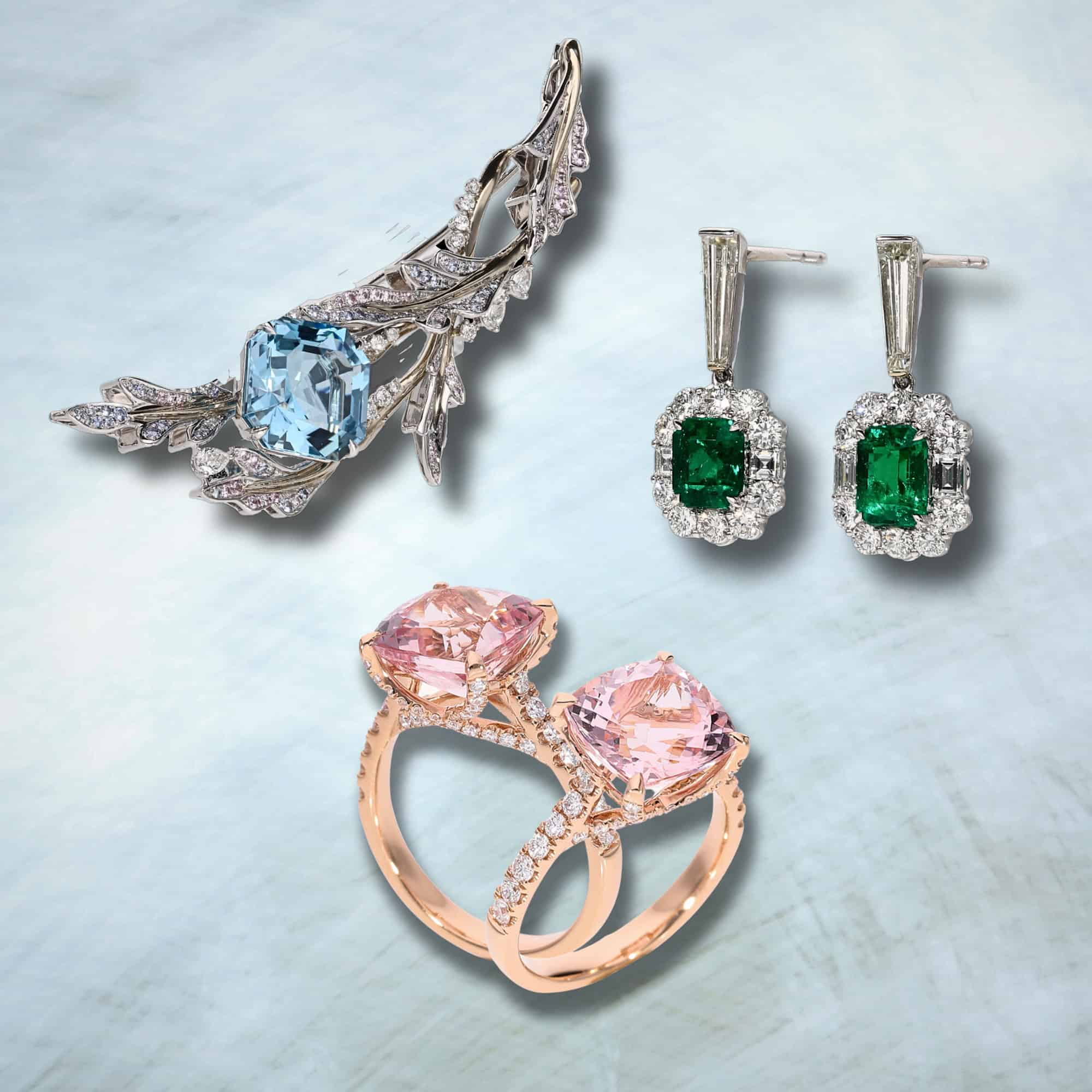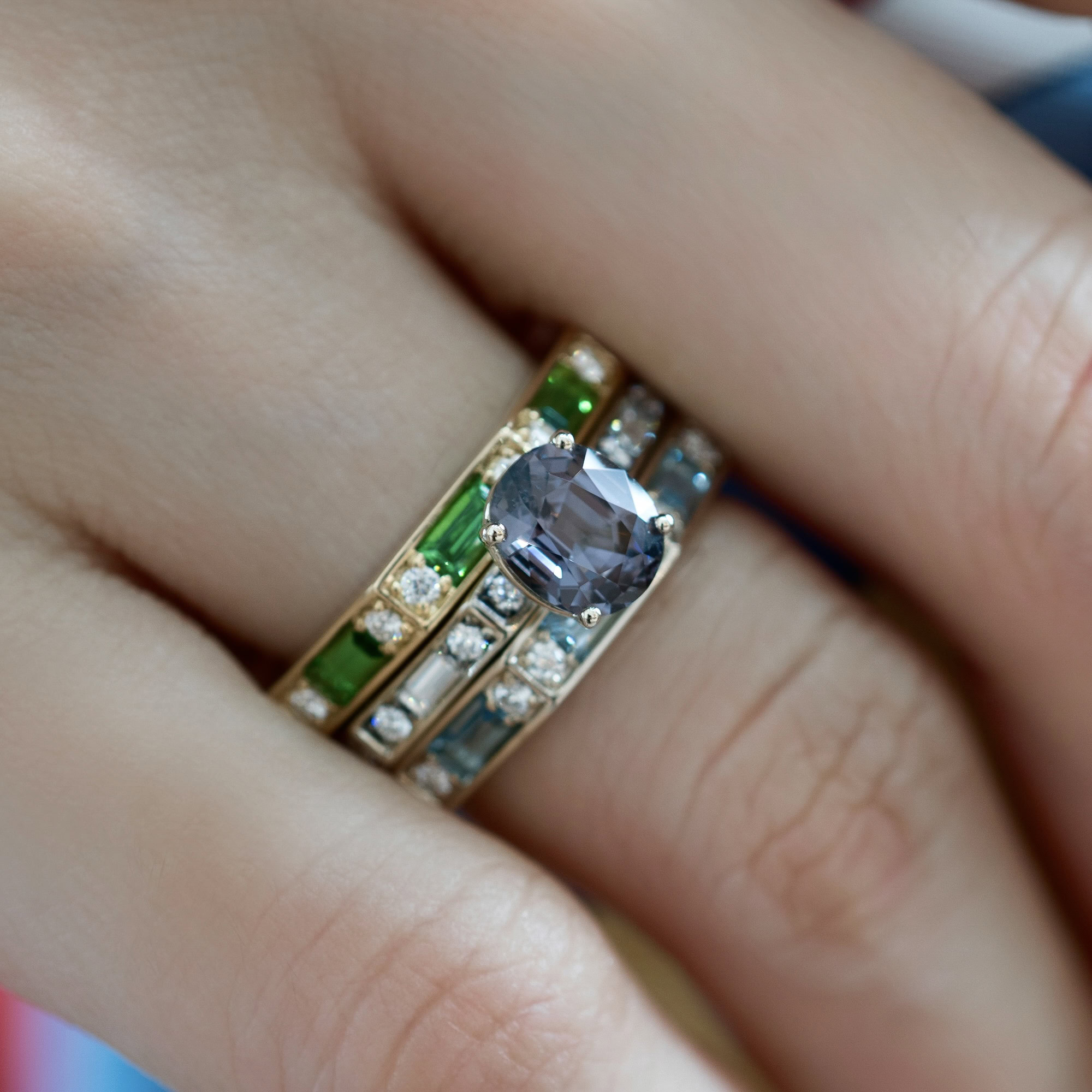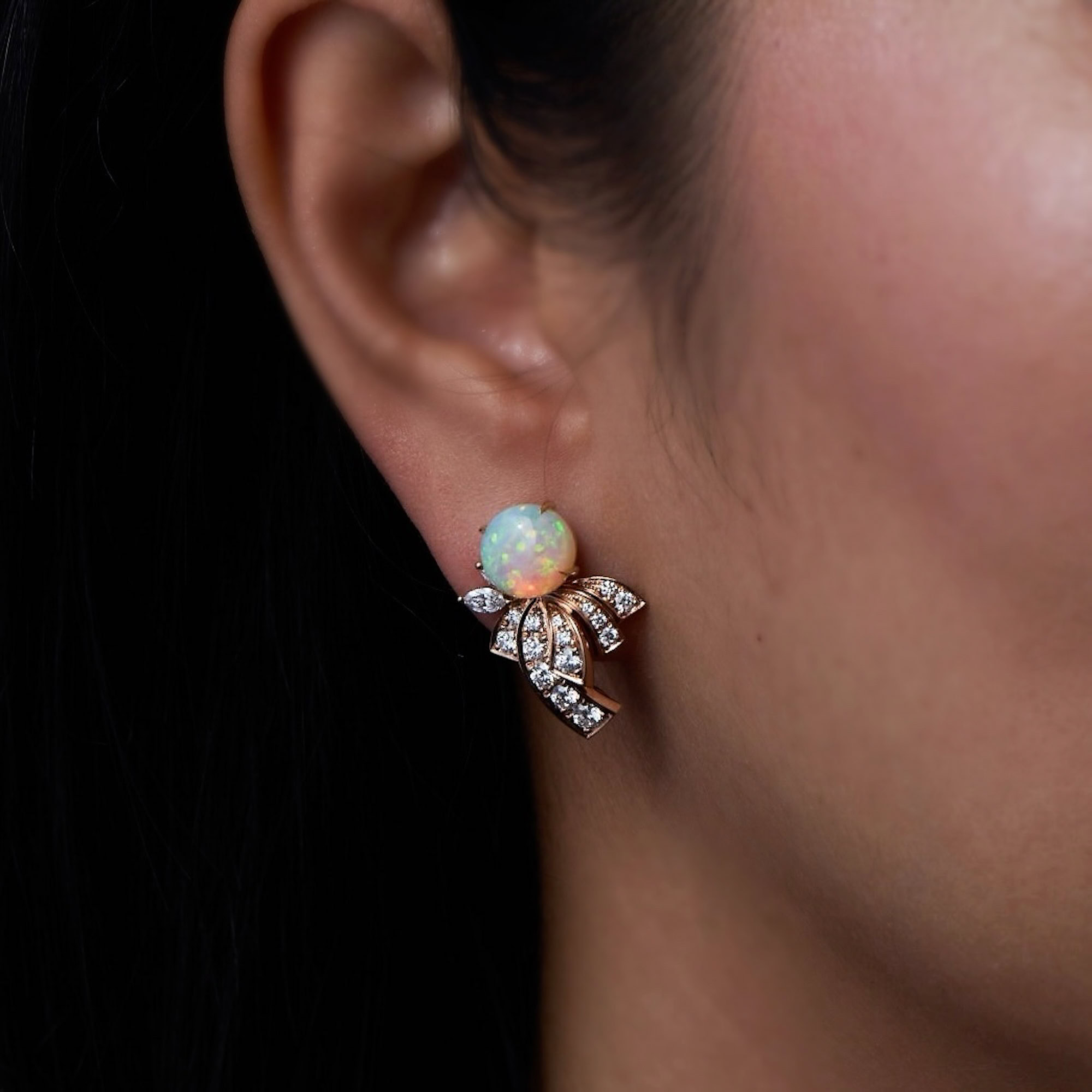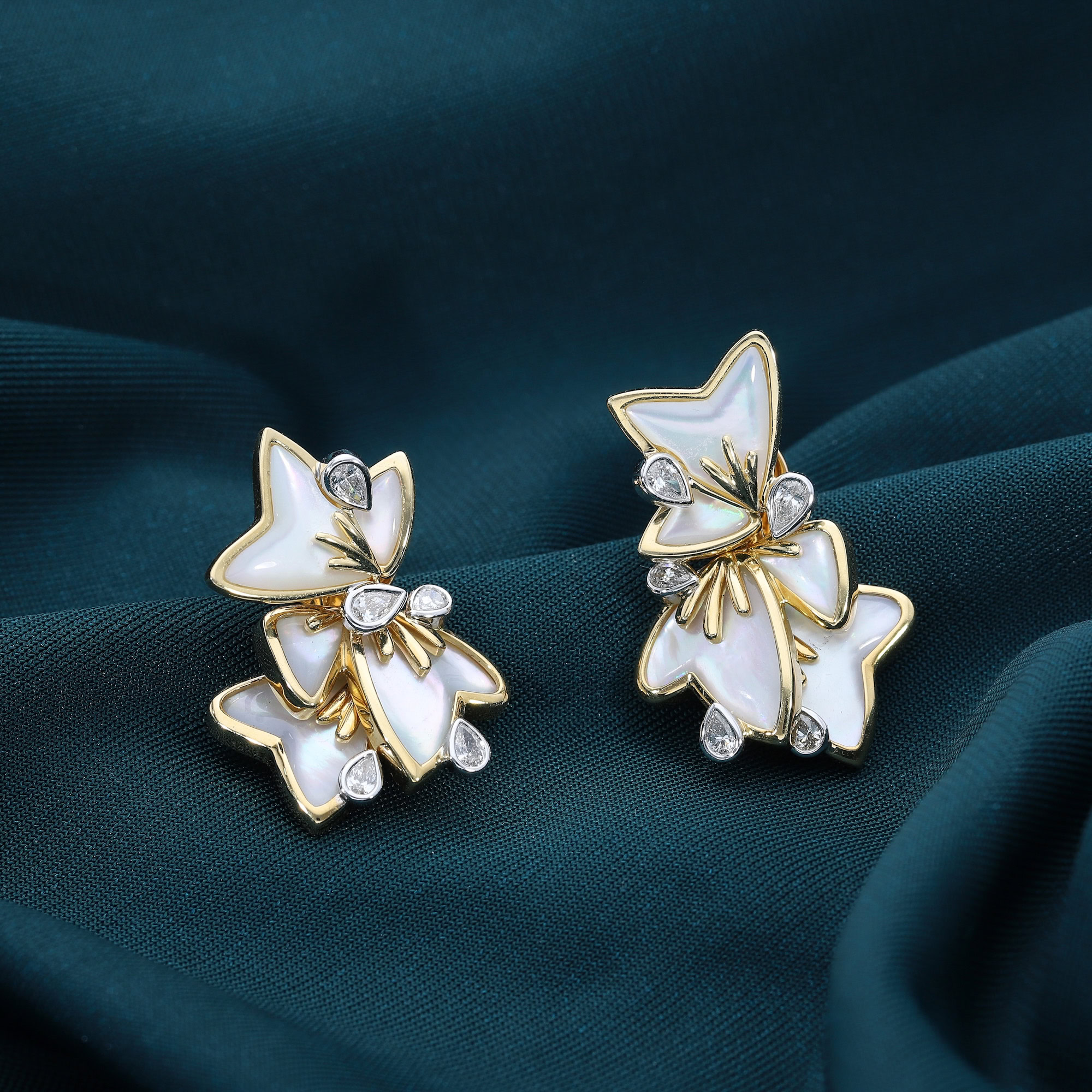For those of you who may be unfamiliar with the term “beryl,” it’s time to reconsider. Emerald, Aquamarine, and Morganite—three exquisite gemstones, each distinct in its own right. Would you have ever imagined that they share a common lineage?
Exploring the World of Beryls
Beryl, a precious silicate mineral comprised of beryllium aluminium cyclosilicate, epitomises the exquisite rarity of nature’s craftsmanship. In its purest form, it stands devoid of color, akin to a pristine canvas awaiting a remarkable transformation.
In the illustrious company of the Corundums, which include the renowned Ruby and Sapphire, the Beryls claim their position among the allochromatic luminaries. This distinction implies that their captivating hues emerge from subtle imperfections intricately woven into their molecular fabric. Unlike idiochromatic gems, such as peridot, where the colour is intrinsic to their very essence, the beryl’s vibrant palette blossoms from within—a harmonious collaboration between the flawless and the imperfect.
These gemstones are inclined to cooler climates and gentler pressures, taking shape beneath the Earth’s surface, nestled within hollow chambers formed by geological fractures within granite pegmatite. They are, quite literally, sculptures created by the cooling of magma.
The metamorphosis continues even after their extraction, as precious beryls frequently undergo heat treatment to enhance and stabilise their colours. Through the alchemy of temperature and time, these gemstones are coaxed into revealing their radiant brilliance.

A Glimpse into Beryl’s Historical Roots
Interestingly, the name “beryllium” attributed to the element itself defied the usual conventions by drawing inspiration from the gemstone, a departure from the norm. Prior to the early 20th century, it was also known as “glucinium.”
The term “beryl” traces its origins to the Greek word ‘beryllos,’ which translates to ‘to turn pale.’ It was used to describe gemstones displaying a captivating blue-green tint. Another interpretation connects ‘beryllos’ with “precious blue-green color-of-sea-water stones.” This leads to the speculation that the initial form of beryl discovered might have been aquamarine. Nevertheless, it’s possible that the term was initially employed to encompass all varieties of blue-green stones, extending beyond the confines of the Beryl family.
Throughout history, gem names have undergone multiple transformations, often being interchanged, borrowed, and even confused before settling into their contemporary meanings. Peridot, formerly known as “Topazios,” serves as a prime example, ultimately adopting its present association with the gemstone topaz.

Exploring Beryl’s Diverse Family Tree
The illustrious lineage of Beryls proudly boasts three of the most coveted coloured treasures in our world: Emerald, Aquamarine, and Morganite. Yet, there’s more to this family than meets the eye. Allow us to introduce you to some of the lesser-known family members:
Goshenite, the purest form of beryl, was first discovered in Goshen, Massachusetts, and is often affectionately referred to as the “mother of gemstones.” As various trace elements are introduced into its core structure, nature weaves its magic, transforming it into emerald, aquamarine, morganite, heliodor, or bixbite.
The pale green variations are simply known as Green Beryls.” Their colour, derived from iron or chromium, lacks the intense saturation and tone required for classification as emeralds. Nevertheless, these softer-hued variations, spanning from light golden-green to mint, possess their own unique beauty.
Heliodor, aptly named from the Greek words for “gift of the sun,” is renowned for its radiant golden-to-yellow hues. This gemstone is cherished for its bright and warm coloration.
On the other end of the spectrum, we have Red Beryls, ranging from deep crimson to vivid raspberry. Unquestionably, they stand as the rarest among their kind. Their strikingly intense colours result from manganese impurities present in substantially higher concentrations compared to Morganite crystals, which, in contrast, display a delicate, muted tonality.
The Pinnacle of Beryl’s Elegance
From the enchanting blue allure of aquamarine to the opulent green fire of emerald and the delicate pink radiance of morganite, these three gemstones are the shining stars of the Beryl family.
Aquamarine
Aquamarines stand as one of the most coveted and highly valued gemstones of our era, and their allure is undeniably well-founded. They possess a remarkable ability to conjure the tranquility of serene seawater, and every facet of their being seems intimately connected to the ocean. So much so that their name, derived from Latin, translates to “marina,” signifying the essence of the sea.
The most exquisite specimens effortlessly blend exceptional clarity and colour. The most sought-after aquamarines exhibit a deep blue to slightly greenish-blue hue, boasting crystalline transparency and an absence of visible inclusions.
These captivating gemstones take shape in mesmerising six-sided prismatic crystals, and when skilfully faceted, they dazzle with a captivating sparkle, owing to their vitreous lustre and translucency. They are, in every sense, a marvel to behold.
In terms of durability, aquamarines rank between 7.5 to 8 on the Mohs scale, making them well-suited for jewellery purposes. Found in countries such as Brazil, Madagascar, and Nigeria, aquamarine is a cherished gemstone cherished across the globe.

Emerald
The incomparable emerald, unapologetically vibrant and opulent, undoubtedly reigns as the quintessential green gemstone. Often referred to as the “stone of inspiration and eternal patience,” it’s a fitting choice to foster harmony between partners.
Emeralds not only hold a cultural allure but also boast an unrivaled historical significance. Throughout centuries, these gemstones have graced the crowns and adornments of royalty, serving as symbols of rebirth, wisdom, and growth.
While a deep, rich green emerald is an absolute dream, there exists a spectrum of saturation and intensity to cater to varying preferences. They register a 7.5 to 8 on the Mohs scale of hardness, indicating commendable toughness. With proper care, a high-quality emerald can endure for generations to come.

Morganite
A profoundly feminine choice, Morganite presents a unique fusion of pink and orange hues, symbolising individuality, warmth, acceptance, and positivity. It encapsulates a radiant disposition and the uplifting essence of life’s sweetest moments.
While intense colouring is relatively rare, most Morganite stones lean towards understated yet graceful shades. Their unmistakable pleochroism, transitioning from a delicate, pale pink to a deeper, cooler hue, underscores the importance of meticulous craftsmanship during the cutting stage to ensure that the crystal’s full spectrum of colours shines through.
Morganite is primarily mined in countries like Brazil, Madagascar, and Afghanistan, and it has witnessed a surge in popularity in recent years, thanks to its romantic allure and durability. Boasting a hardness rating of 7.5 to 8 on the Mohs scale, it proves suitable for a wide array of jewellery pieces and has gained particular prominence in the realm of engagement rings.

Distinctive Traits of Beryl Gemstones
Gemstones within the beryl mineral family exhibit a set of unique identifying characteristics, including a vitreous to resinous lustre, a hexagonal crystal structure, and exceptional transparency. However, it’s the vibrant array of colours—from the serene blue of aquamarine to the fiery green of emerald and the gentle pink of morganite—that truly sets them apart.
Furthermore, their impressive hardness rating of 7.5 to 8 on the Mohs scale and a specific gravity ranging from approximately 2.6 to 2.9 contribute to their remarkable durability and density, rendering beryl gemstones easily distinguishable and highly prized.
While inclusions are commonly found in all beryl varieties, emeralds are particularly known for showcasing them. Interestingly, these inclusions can serve as valuable clues for determining the gem’s geographical origin. For example, Colombian emeralds often display three-phase inclusions referred to as “jardin,” resembling a garden due to the presence of trapped fluids and minerals. In contrast, Zambian emeralds may contain single-phase inclusions. These unique internal features function as nature’s fingerprints, enabling gemologists to identify the likely origin of the gemstone.
Where Beryls are found
Gemstones belonging to the beryl mineral family are commonly unearthed in various regions across the globe.
Emeralds, renowned for their lush green hue, are primarily mined in countries such as Colombia, Zambia, and Brazil.
Aquamarines, with their tranquil blue shades, are frequently sourced from regions including Brazil, Madagascar, and Nigeria.
Morganites, known for their soft pink allure, are often found in Brazil and Madagascar.
Heliodor, displaying stunning golden to yellow hues, is extracted from locations such as Brazil, Namibia, and Ukraine.
Moreover, lesser-known beryl varieties such as goshenite and bixbite have been discovered in regions like the United States and parts of Africa. The wide global distribution of beryl gemstones ensures a diverse array of sources for these captivating and diverse minerals.
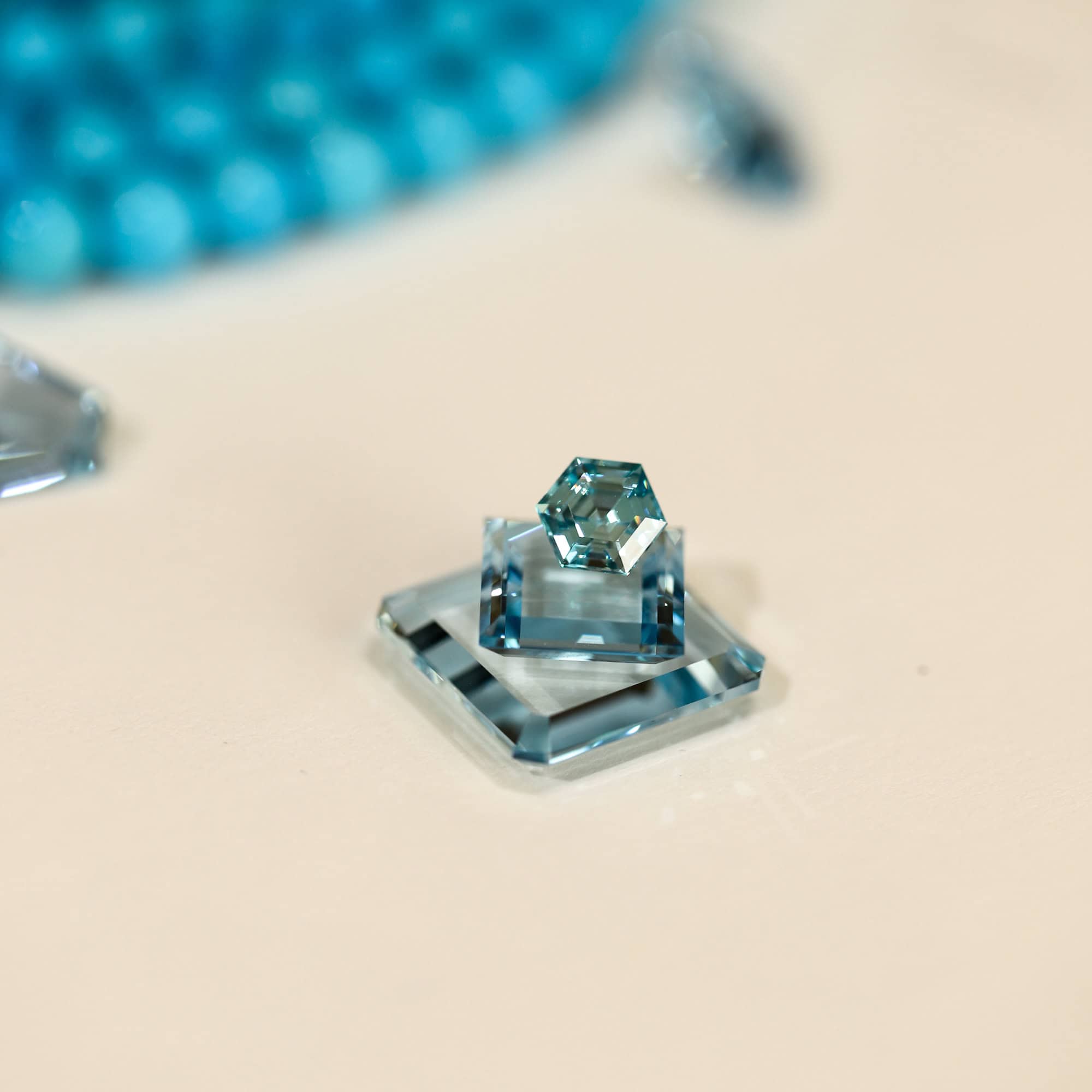
Historically Celebrated Beryl Jewellery
Over the course of history, gemstones from the beryl family have left an enduring legacy, gracing some of the most remarkable pieces of jewellery. One such iconic example is the exquisite “Queen Tiara,” adorned with emeralds, which belonged to Queen Mary of the United Kingdom. This magnificent tiara serves as a testament to the timeless allure of emeralds in royal regalia.
Another renowned masterpiece is the “Huis Ten Bosch Tiara,” featuring aquamarines, cherished as a treasure within the Dutch royal collection.
Furthermore, the resplendent “Pink Morganite Necklace” crafted by the esteemed jeweller Harry Winston exemplifies the delicate beauty of this enchanting peachy-hued stone.
Radiating timeless elegance, these beryl gemstones have graced the world’s most prestigious jewellery creations, adorning the crowns, necks, and fingers of monarchs, celebrities, and collectors alike.

Conclusion: Crafting Exquisite Bespoke Fine Jewellery with Beryl Gemstones
Dubbed as “gemstone royalty” for their remarkable range of vibrant members, each beryl gemstone holds a unique place in the world of jewellery, with its own captivating story to narrate.
Offering an unparalleled spectrum of brilliant colours, this gemstone family serves as a true celebration of nature’s magnificence.
From the depths of Colombian mines to the sun-drenched shores of Madagascar, their origins are as diverse as the emotions they evoke.
With unwavering hardness and durability as their constant companions, beryls prove to be exceptional candidates for crafting bespoke jewellery creations and making a sound investment.
Undoubtedly, characterised by high quality and esteem, their value is likely to rise over time, making them valuable pieces that can be passed down through generations as cherished family heirlooms.

